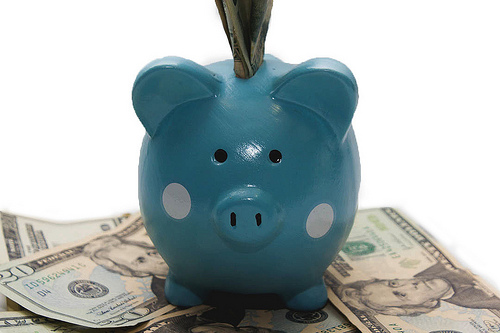“I expect that it will be appropriate at some point later this year to take the first step to raise the federal funds rate and thus begin normalizing monetary policy.” - Federal Reserve Chair Janet Yellen, July 2015
This week, the central bank will do something that it has not done in over nine years: raise short-term interest rates. With the economy growing at a decent, though not great 2.25 percent annualized pace, 2015 monthly job creation averaging 210,000 and unemployment sitting at a seven-year low of 5 percent, Yellen and her cohorts have reiterated that now is the time to normalize policy.
This will be the first of many Fed actions that will eventually return rates to somewhere in the vicinity of 3.5 percent. How quickly they get there is up for discussion. Today the bond futures market anticipates that it will take around three years, but Yellen has said that the future path of interest rates will be entirely data dependent. If inflation rears its head, hikes may be quicker than the expected pace of every other meeting for the next three years. If the economy stalls, the central bank could pull back and skip a meeting.
Considering that it rates have been sitting at zero for seven years, it is helpful to review where we were then and where we are now. Though Americans may complain about slow growth, how quickly we forget what rotten looks like.
December 2008:
- Unemployment Rate: 7.2% (rate would top out at 10% in 2010)
- Job Loss (Dec): -681,000
- Q4 GDP: -8.2%
- S&P 500 12/12/08: 879
December 2015:
HOW WILL THE FED’S ACTIONS IMPACT INVESTORS?
Another big difference between where we are today versus seven years ago is that the Fed will be increasing rates with a balance sheet that has more than quadrupled through three rounds of bond buying (quantitative easing). How various markets will react to the first hike is unknown, because of the very fact that we are entering unchartered and choppy water.
Stocks: Typically, stock markets have dipped after the first rate increase, but usually regain their upward momentum, as long as the rate increase is in response to stronger economic activity. Stocks usually top out after the final increase. The last tightening cycle began with interest rates at 1 percent in June 2004 and ended with rates at 5.25 percent two years later. The stock market peaked in October 2007 and you know what happened after that!
Emerging markets are already feeling the effects, as investors exit risky bets in once high-flying markets like Southeast Asia, Brazil or Turkey. At the same time, US stocks are feeling the weight of sliding corporate profits. And while continued improvements in the economy and the slow pace of rate hikes could help equities regain more solid footing, many investors have forgotten how low interest rates made their stocks look attractive, relative to bonds.
Bonds: Billions of dollars have flowed into global bond markets over the past seven years, as nervous investors sought the safety of fixed income. Many investors are now fearful that rising interest rates will destroy the value of their bond positions. While it is true that as interest rates increase, prices on bonds that have already been issued, drops, that is not a good reason to abandon the asset class.
For most investors who own individual bonds, they will hold on until the bonds mature and then purchase new issues at cheaper prices/higher rates. For those who own bond mutual funds, they will reinvest dividends at lower prices and as the bonds in the portfolio mature, the managers will reinvest in new, cheaper issues with higher interest rates. In other words, being a long term investor should help you weather rising interest rates, though you may want to consider lowering your duration, using corporate bonds and keeping extra cash on hand. (For more on bonds, check out this post.)
HOW WILL THE FED’S ACTIONS IMPACT CONSUMERS?
In the seven years since financial crisis, companies, governments and consumers have gotten used to ultra-low interest rates. Here’s how the change in policy could impact you:
Savers: Any increase in the Fed Funds rate will help nudge up rates on savings accounts, so savers will finally be rewarded. That said, rates will still be low and the likely slow pace of increases will mean that savers’ suffering is not likely to end any time soon.
Borrowers: While rates for mortgages key off the 10-year government bond, adjustable rates are linked to shorter-term rates, which means that consumers should be careful about assuming these loans and also should consider locking in a fixed rate now. Additionally, as rates increase, the availability of 0 percent credit card and auto loans could diminish.
MARKETS: Oil, oil everywhere…and nobody wants to stop producing. Crude oil saw its worse week of the year, as evidence continues to mount that supplies are expanding amid withering demand.
- DJIA: 17,265 down 3.3% on week, down 3.2% YTD
- S&P 500: 2,012 down 3.8% on week, down 2.3% YTD
- NASDAQ: 4,933 down 4.1% on week, up 4.2% YTD
- Russell 2000: 1123, down 5% on week, down 6.7% YTD
- 10-Year Treasury yield: 2.14% (from 2.28% a week ago)
- Jan Crude: $35.62, down 10.9% on week
- Feb Gold: $1,075.70, down 0.8% on week
- AAA Nat'l avg. for gallon of reg. gas: $2.01 (from $2.04 wk ago, $2.60 a year ago)
THE WEEK AHEAD: All Fed, all the time…
Mon 12/14:
Tues 12/15:
Fed begins two-day policy meeting
8:30 CPI
8:30 Empire State Manufacturing Index
10:00 Housing Market Index
Weds 12/16:
8:30 Housing Starts
9:15 Industrial Production
2:00 Fed rate decision/Economic projections
2:30 Yellen Presser
Thursday 12/17:
8:30 Philadelphia Fed Survey
Friday 12/18:
![Jill on Money [ Archive]](http://images.squarespace-cdn.com/content/v1/59efbd48d7bdce7ee2a7d0c4/1510342916024-TI455WZNZ88VUH2XYCA6/JOM+Blue+and+White.png?format=1500w)

